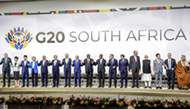The Trophy House Gets Smaller and Greener

An environmentally friendly home in Venice, California, designed by Melinda Gray.
By FELICITY BARRINGERFor the high-profile crowd that turned out to celebrate a new home in Venice, California, the attraction wasn’t just the company and the architectural detail. The house boasted the builders’ equivalent of a three-star Michelin rating: a LEED platinum certificate.
The actors John Cusack and Pierce Brosnan, with his wife, Keely Shaye Smith, a journalist, came last fall to see a house that the builders promised would “emit no harmful gases into the atmosphere,” “produce its own energy” and incorporate recycled materials, from concrete to countertops.
Behind the scenes were Tom Schey, a homebuilder in Santa Monica, and his business partner, Kelly Meyer, an environmentalist whose husband, Ron, is the president of Universal Studios. Ms. Meyer said their goal was to show that something energy-conscious “doesn’t have to look as if you got it off the bottom shelf of a healthfood store.
“It doesn’t have to smell like hemp,” she said.
That was probably a good thing. The four-bedroom house, designed by Melinda Gray, was for sale, with a $2.8 million asking price.
Its rating was built into that price. LEED - an acronym for Leadership in Energy and Environmental Design - is the hot designer label, and platinum is the badge of honor, the top classification given by the U.S. Green Building Council. “There’s kind of a green pride, like driving a Prius,” said Brenden McEneaney, a green building adviser to the city of Santa Monica, adding, “It’s spreading all over the place.”
Devised eight years ago for the commercial arena, the ratings now cover many things, including schools and retail interiors. But homes are the new frontier.
The LEED brand stands apart because of its four-level rankings - certified, silver, gold and platinum - and third-party verification. So far this year, 10,250 new home projects have registered for the council’s consideration, compared with 3,100 in 2006, the first year of the pilot home-rating system.
But try asking buyers used to conspicuous consumption (a 1,100-square-meter house) to embrace conspicuous nonconsumption (say, 225 square meters for a small family). Or to earn points by recycling and weighing all their construction debris . The imperatives of comfort and eco-friendliness are not always in sync.
For instance, the Brosnans, who admired Ms. Meyer’s house, are now building a home of their own and “really want to do it green,” said David Hertz, their architect. Mr. Brosnan may adopt many environmentally sound building techniques, but he is not going to live in a 225-squaremeter home, the architect said.
Mr. Hertz’s complaint goes beyond size. He says the rating system is rigid and cumbersome . The system is based on points earned for a variety of eco-friendly practices; builders choose among them, balancing the goals of cost control, design and high point totals.
Worries about climate change and rising energy costs are part of the equation: roughly 21 percent of heat-trapping carbon dioxide emissions come from homes; nearly 40 percent come from residential and commercial structures combined.
One requirement for getting a home certified is hiring an on-site inspector approved by the council to test the new systems and help fill out the huge amount of paperwork . The organization charges from $400 for a home to $22,500 for the largest buildings to register and certify costs.
Joel McKellar, a researcher with LS3P Associates, an architecture firm in Charleston, South Carolina, said that to earn credit for adequate natural light, “you have to calculate the area of the room, the area of the windows, how much visible transmittance of light there is.”
Is LEED a useful selling tool- Offered with great fanfare last fall on eBay for $2.8 million, the Meyer/Schey home in Venice, which can be seen at www.Project7ten.com, got no bids at the time; it recently found a potential buyer, for $2.5 million.
But Maria Chao, an architect in Amherst, Massachusetts, said her new home’s certification rating meant instant recognition. “This is a small town,” Ms. Chao said. “When I mention I live in the house on Snell Street, people say, ‘Oh, the green home.’”
Frances Anderton, a radio host and Los Angeles editor of Dwell, an architecture and design magazine, longs for the day when LEED recognition is irrelevant. “Architects should be offering a green building service,” Ms. Anderton said, “without needing a badge of pride.”
스마터리빙
more [ 건강]
[ 건강]이제 혈관 건강도 챙기자!
[현대해운]우리 눈에 보이지 않기 때문에 혈관 건강을 챙기는 것은 결코 쉽지 않은데요. 여러분은 혈관 건강을 유지하기 위해 어떤 노력을 하시나요?
 [ 건강]
[ 건강]내 몸이 건강해지는 과일궁합
 [ 라이프]
[ 라이프]벌레야 물럿거라! 천연 해충제 만들기
 [ 건강]
[ 건강]혈압 낮추는데 좋은 식품
[현대해운]혈관 건강은 주로 노화가 진행되면서 지켜야 할 문제라고 인식되어 왔습니다. 최근 생활 패턴과 식생활의 변화로 혈관의 노화 진행이 빨라지고
사람·사람들
more
김응화 단장, 아쿠아리움 퍼시픽 ‘헤리티지 어워드’
김응화무용단의 김응화 단장이 롱비치의 아쿠아리움 오브 더 퍼시픽이 수여하는 2025년 ‘헤리티지 어워드’의 영예를 안았다. 올해 처음 개최된 …

이정임 무용원, 팬아시아 전통예술 경연대회
남가주 최대 규모의 아시아 전통 예술 경연대회인 팬아시아 댄스 앤 드럼 대회에서 이정임무용원의 청소년 단원들이 경연에 참가해서 전체 대상 등 …
유희자 국악무용연구소, 팬아시아 전통예술대회
지난 15일 샌개브리얼 셰라톤 호텔에서 열린 남가주 최대 규모의 전통 무용대회인 팬아시아 댄스 앤 드럼 대회에서 유희자 국악무용연구소(원장 유…
송년행사 안내해드립니다
다사다난했던 2025년이 이제 종착점을 향해 달려가고 있습니다. 한 해를 잘 마무리하고 2026년 새해를 힘차게 맞기 위한 다짐을 하는 송년 …
‘군중’ 시리즈 이상원 작가 첫 LA전시회
아케디아 소재 홈갤러리인 ‘알트프로젝트’(대표 김진형)가 오는 29일(토)부터 한국 블루칩 작가 이상원이 참여하는 전시 ‘인 드리프트(In D…
많이 본 기사
- ‘쿠데타 모의’ 브라질 前대통령 징역형 집행 하루 전 체포
- 딥페이크 사기에 가장 많이 악용된 스타는 테일러 스위프트
- 사과·尹절연 포함될까…국힘, ‘비상계엄 1년’ 메시지 수위 고심
- ‘당정대 삼각편대’ 정청래·김민석·강훈식…주목되는 광폭 행보
- 시카고서 10대 집단난동 중 총격…트… 1
- 임시정부가 펴낸 ‘한일관계사료집’ 복원 거쳐 공개된다
- AI탑재 곰인형이 성관계·약물 대화까지?…美 소비자단체 경고
- [특파원 시선] 트럼프도 떨게만든 물가…정책 유턴 신호탄될까
- 한덕수 재판서 드러난 ‘계엄의 밤’…내란 첫 법적판단 나온다
- 이지혜, 인중축소술 후 “남편이 하향세 탈거라 저주”→ “존재 자체로 우린 특별해” 멘탈 잡는 중
- 美 주도 종전안에 유럽 정상들 “재논의 필요”…신중·의구심
- 성시경, 매니저 배신에 끝내 눈물.. “너무 힘들지만 마음 다잡아”
- 조영구, 주식으로 21억 잃었는데 ‘10억’ 집값도 하락 “미용실서 아줌마 말 듣고 분양”
- 트럼프, 측근이었다 등돌린 의원 사임 발표에 “지지율 급락 탓”
- ‘부친 빚투 논란’ 김혜성 “순간 감정 추스르지 못해, 깊이 반성한다” 사과문 공개
- 역사적인 누리호 4차 발사 ‘카운트다운’…관람 명당 각광
- “美, 23일 제네바서 우크라와 종전안 논의…루비오 등 참석”
- ‘세계 최강’ 최민정, 월드투어 전종목 1위 예선 통과... 金 싹쓸이 정조준
- 트럼프, 우크라 평화구상에 “우크라에 대한 최종제안 아니다”
- “로봇이 사람 두개골 깰 수 있어”…피겨AI, 前직원에 피소
- 뉴욕증시 거품 우려에 격동의 한 주… “월가, 더 큰 혼란 대비”
- ‘김건희 계좌 관리인’ 도이치 주가조… 1
- 푸틴 특사 “트럼프 평화 계획은 우크라 구하기 위한 것”
- 李대통령 “통일 노하우 알려달라”…獨총리 “北 궁금한 것 많아”
- ‘단 1승이면 전설이 된다’ 안세영, 호주오픈 결승 진출... 女 배드민턴 단식 최다승 경신 도전
- 美 빠진 유엔기후총회 ‘화석연료’ 언급 빠진 선언문 내고 종료
- “트럼프 종전 압박, 우크라 ‘부패 스캔들’ 약점 노린 듯”
- “트럼프 정부, 대법 패소 대비 대체 관세 수단 준비”
- G20 정상회의 첫날부터 ‘남아공 정상선언’ 전격 채택
- 李대통령, G20 정상회의 둘째날… ‘AI시대’ 국제협력 구상 밝힌다
- CDC ‘백신은 자폐증 유발 안한다’ 입장 변경…보건장관 지시
- ‘케데헌’, 오스카 애니메이션상 후보자격 갖춘 35편에 포함
- “日, 내년 1월 한중일 정상회의 개최 韓·中에 타진…中 거부”
- 李대통령, ‘선순환재정·다자무역·개발협력’…포용성장 3大제안
- 남아공서 아프리카 첫 G20 개막… ‘美 보이콧’ 극복 관심
- 미중 해군 실무회의…中 “주권·안전 위협행위 단호히 반대”
- ‘김민재 위기! 안 그래도 제 3센터백인데’ 강력 경쟁자 日 이토, 복귀 임박했다... “몇 달간 중요한 기둥될 것”
- 변종 조류독감 최초 감염자 사망…워싱턴 보건당국 “대중 위험 낮아”
- EU, 미국에 파스타·치즈·와인 관세 면제 요구
- LA항 대형 컨테이너선 화재…일부 터미널 운영 중단
1/5지식톡

-
 테슬라 자동차 시트커버 장착
0
테슬라 자동차 시트커버 장착
0테슬라 시트커버, 사놓고 아직 못 씌우셨죠?장착이 생각보다 쉽지 않습니다.20년 경력 전문가에게 맡기세요 — 깔끔하고 딱 맞게 장착해드립니다!장착비용:앞좌석: $40뒷좌석: $60앞·뒷좌석 …
-
 식당용 부탄가스
0
식당용 부탄가스
0식당용 부탄가스 홀세일 합니다 로스앤젤레스 다운타운 픽업 가능 안녕 하세요?강아지 & 고양이 모든 애완동물 / 반려동물 식품 & 모든 애완동물/반려동물 관련 제품들 전문적으로 홀세일/취급하는 회사 입니다 100% …
-
 ACSL 국제 컴퓨터 과학 대회, …
0
ACSL 국제 컴퓨터 과학 대회, …
0웹사이트 : www.eduspot.co.kr 카카오톡 상담하기 : https://pf.kakao.com/_BEQWxb블로그 : https://blog.naver.com/eduspotmain안녕하세요, 에듀스팟입니다…
-
 바디프렌드 안마의자 창고 리퍼브 세…
0
바디프렌드 안마의자 창고 리퍼브 세…
0거의 새제품급 리퍼브 안마의자 대방출 한다고 합니다!8월 23일(토)…24일(일) 단 이틀!특가 판매가Famille: $500 ~ $1,000Falcon: $1,500 ~ $2,500픽업 & 배송직접 픽업 가능LA…
-
 바디프렌드 안마의자 창고 리퍼브 세…
0
바디프렌드 안마의자 창고 리퍼브 세…
0거의 새제품급 리퍼브 안마의자 대방출 한다고 합니다!8월 23일(토)…24일(일) 단 이틀!특가 판매가Famille: $500 ~ $1,000Falcon: $1,500 ~ $2,500픽업 & 배송직접 픽업 가능LA…
케이타운 1번가
오피니언
 조지 F·윌 워싱턴포스트 칼럼니스트
조지 F·윌 워싱턴포스트 칼럼니스트 [조지 F. 윌 칼럼] 세계를 가장 크게 바꾼 사건, 미국 혁명전쟁
 이희숙 시인·수필가
이희숙 시인·수필가 [금요단상] 낙엽 위에 남겨진 향
 김정곤 / 서울경제 논설위원
김정곤 / 서울경제 논설위원[만화경] ‘중동판 꽌시’ 와스타

[왈가 왈부] ‘패트 충돌’ 선고에 여야 “정치 판결” “자성 촉구” 아전인수?
 수잔 최 한미가정상담소 이사장 가정법 전문 변호사
수잔 최 한미가정상담소 이사장 가정법 전문 변호사 [수잔 최 변호사의 LIFE &] 서울 가을 자락에서 만난 쉼터
 강민수 을지대 첨단학부 교수 한국인공지능학회장
강민수 을지대 첨단학부 교수 한국인공지능학회장 [기고] 디지털 주권의 토대, 소버린 클라우드
1/3지사별 뉴스

론 김 뉴욕주하원의원, 플러싱 YMCA에 건축지원금 300만불 전달
론 김 뉴욕주하원의원이‘플러싱 커먼스’(Flushing Commons)에 새롭게 들어설 예정인 플러싱 YMCA에‘건축지원금’(Capital F…
이민법원 적체에… 한인들‘신분 위기’

“함께 만들어 가는 평화의 약속”
“오늘 출범식은 단순한 시작이 아니라 한인사회와 함께 만들어가는 평화와 희망의 약속입니다. 한반도의 평화는 거대한 정치적 언어가 아닌 우리 같…
VA 34%·MD 30%만 모기지 ‘0’

UC 등록금 치솟는다 “매년 최고 5% 인상”
UC 이사회가 매년 최대 5%까지 신입생들의 등록금을 인상할 수 있는 ‘등록금 안정화 프로그램’을 통과시켜 향후 UC 학생들과 학부모들의 학비…
[알립니다]‘온정의 슬리핑백’ 보내기 운동

오늘 하루 이 창 열지 않음 닫기 



















































.png)


댓글 안에 당신의 성숙함도 담아 주세요.
'오늘의 한마디'는 기사에 대하여 자신의 생각을 말하고 남의 생각을 들으며 서로 다양한 의견을 나누는 공간입니다. 그러나 간혹 불건전한 내용을 올리시는 분들이 계셔서 건전한 인터넷문화 정착을 위해 아래와 같은 운영원칙을 적용합니다.
자체 모니터링을 통해 아래에 해당하는 내용이 포함된 댓글이 발견되면 예고없이 삭제 조치를 하겠습니다.
불건전한 댓글을 올리거나, 이름에 비속어 및 상대방의 불쾌감을 주는 단어를 사용, 유명인 또는 특정 일반인을 사칭하는 경우 이용에 대한 차단 제재를 받을 수 있습니다. 차단될 경우, 일주일간 댓글을 달수 없게 됩니다.
명예훼손, 개인정보 유출, 욕설 등 법률에 위반되는 댓글은 관계 법령에 의거 민형사상 처벌을 받을 수 있으니 이용에 주의를 부탁드립니다.
Close
x